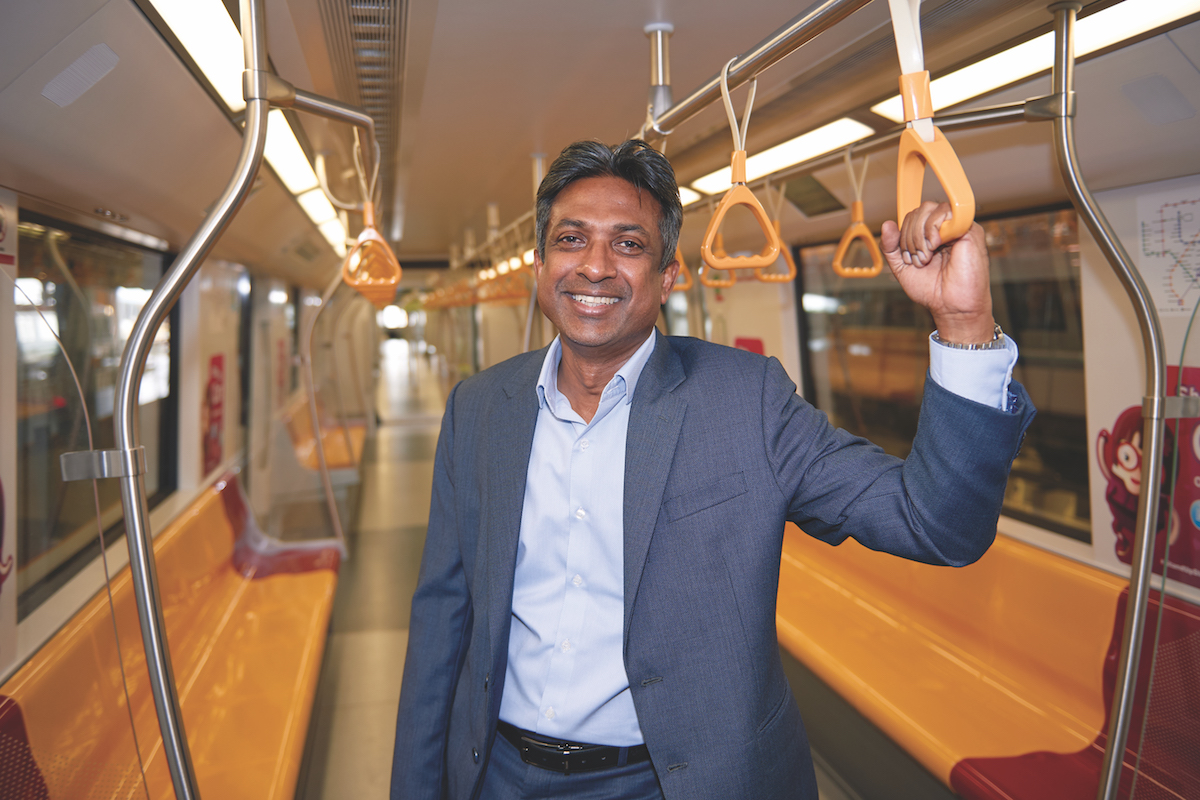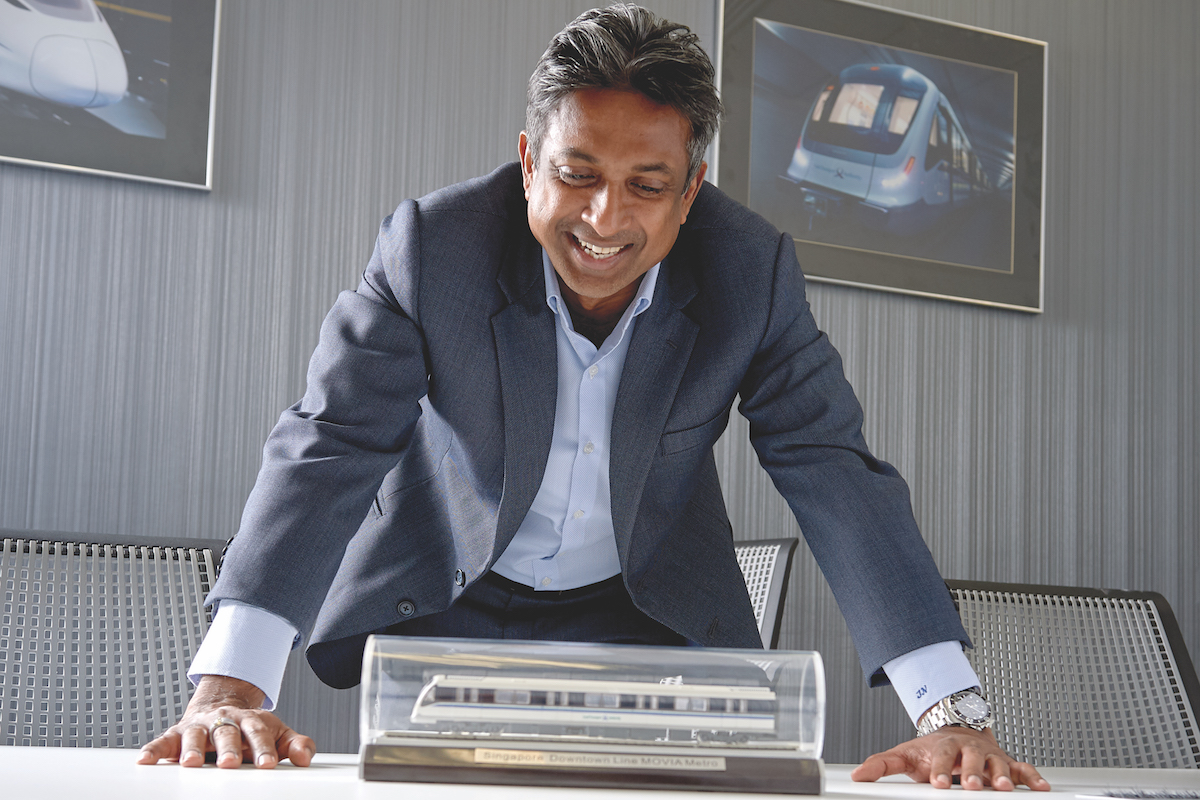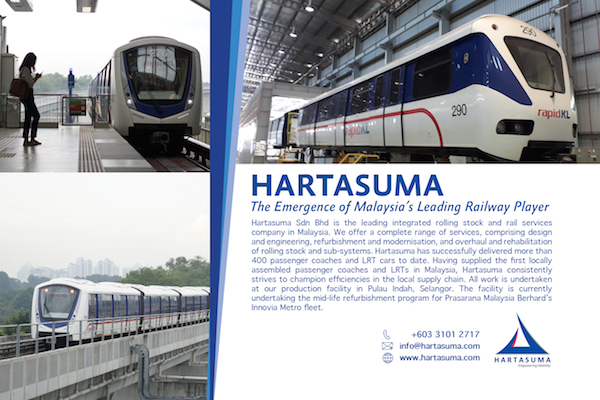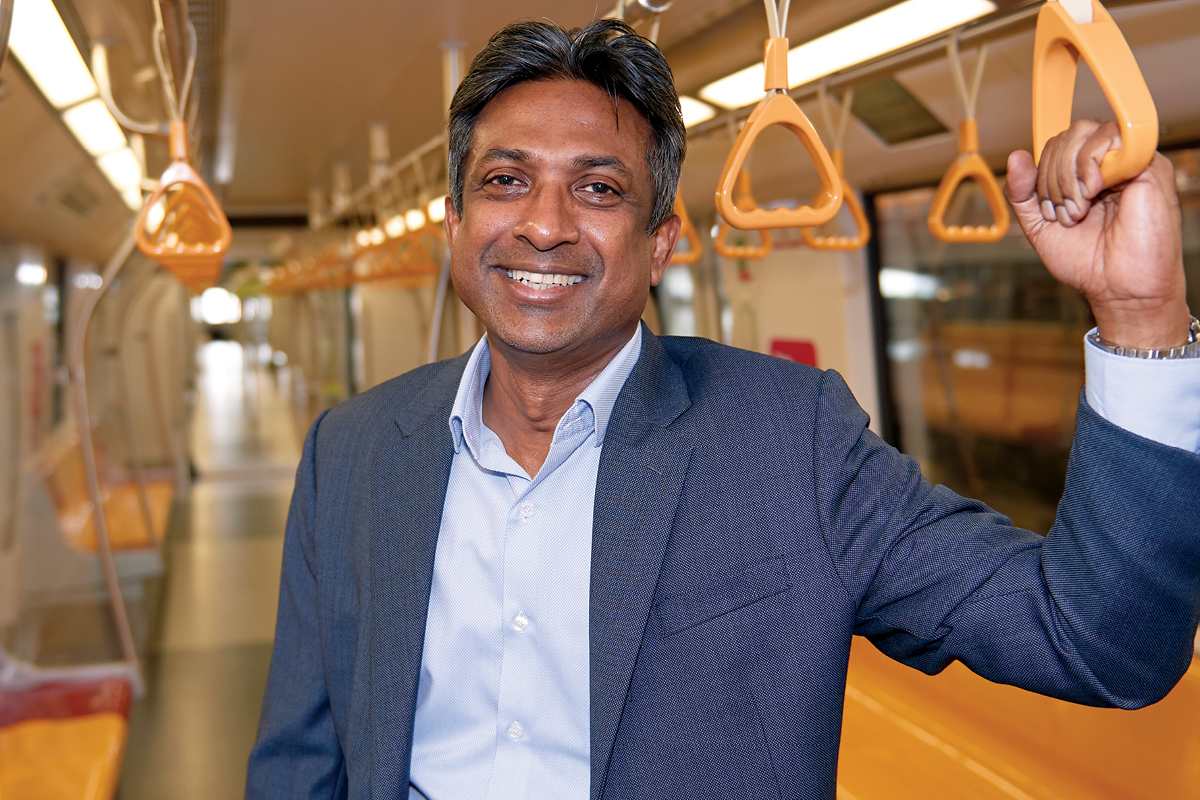On average, a worker spends 139 hours a year commuting, the equivalent of 19 standard working days. These journeys are often set so deeply in routine that people rarely stop to think about how commuting is transforming urban life.

“Life is about movement. Just about everyone needs to get somewhere, whether it’s commuting to work, visiting family, or following a dream,” says Jayaram (Jay) Naidu, Bombardier Transportation’s Head of Project Management for South-East Asia and Australia and Head of Services for South-East Asia.
“Large metropolitan cities are creating better public transportation which is now focused on urban mobility, better living and stronger communities.”
“Governments are shifting their focus towards urban planning and sustainability. The priority is now to improve the quality of life for residents by better connecting them with economic centres, urban areas, tourist destinations, schools, universities and health care, while also easing traffic congestion.”
At the moment, more than 100,000 Bombardier trains are serving cities across the world. Headquartered in Berlin, Germany, Bombardier Transportation employs around 39,000 people and its products and services operate in more than 60 countries. For Jay, it’s easy for him to be passionate about the role; Bombardier’s vision is to create innovative solutions to redefine the way people move within cities and between them.
“Today’s world is defined by mobility, and its demand is growing,” says Jay. “We’ve been contributing to the region’s growth for the past 30 years by transforming its public transportation network, and we’re changing the way we work. We’re shifting towards investing in the region’s rail engineering and supply chain, because rail networks are highly complex systems that require deep engineering expertise.”
Jay, who is originally from Singapore, has a wealth of experience in the field working with Bombardier for the past 11 years. He contributed to projects such as the London Underground as Deputy Project Director before moving to Head of Sales, Marketing and Business Development for Asia–Pacific and Head of South-East Asia.
In April 2019, he was appointed Head of Project Management for South-East Asia and Australia and Head of Services for South-East Asia, as well as chief representative for customer and government relations in South-East Asia.
“Being a strategic partner to rail authorities and operators, what is Bombardier’s differentiator? Performance.” says Jay. “We’re helping cities grow, and moving people safely while developing economies.”
In the past three decades, Bombardier has come a long way in South-East Asia, from winning its first turnkey systems contract for a 27-kilometre rail network in Kuala Lumpur in 1992, to winning Bombardier’s biggest asset replacement contract in Asia on Singapore’s North–South and East–West MRT line in 2018.
The manufacturer’s proven expertise is evident in the supply of metro cars and mass transit systems across Asia–Pacific, with one of the world’s largest fleets of INNOVIA (metro) operating in Kuala Lumpur at the Kelana Jaya LRT line.
Bombardier is also set to deliver one of Bombardier’s largest MOVIA (metro) fleets in the world operating in Singapore’s Downtown MRT line and the North–South and East–West MRT lines, as well as in the process of delivering the first monorail for Bangkok’s Pink and Yellow lines.
“With demands on mobility growing exponentially in South-East Asia, Bombardier must find solutions that work for everyone. It’s a challenge no-one can meet on their own. That’s why Bombardier works as a strong team to support customers in understanding the commuter’s needs, while striving to create solutions that anticipate the needs of tomorrow and keep cities moving.”
Across South-East Asia, Bombardier oversees four specialised centres with 200 skilled engineering experts. To drive a sustainable performance, Bombardier proactively orchestrates succession planning and develops local talent as next-generation leaders.

Jay believes growing strong local roots regionally is a key to market growth and sees the potential in leaving behind a measurable legacy by regularly investing in people development, staff engagement and training, as well as creating diversity in the workplace.
“We have local graduate program students who joined Bombardier 10 years ago being promoted to leadership roles. They are currently Project Director and Project Manager for Singapore’s Bukit Panjang LRT line and the North–South and East–West MRT lines.
Our commitment is to continuously invest in employees and develop local rail system talents for the long-term needs of regional authorities, as well as building a sustainable team to increase innovation and performance,” Jay says.
“Ultimately, success is a team effort. Every employee is an important part of the team and should always receive credit for success. It is crucial for management to be aware of the employees’ limitations and call upon the skills of the team to complete tasks, as well as spending time determining how they can improve the result by addressing gaps in individual strengths and weaknesses.”
As much as Bombardier relies on the efforts of passionate, skilled employees, it is equally dependent on the competence of its partners. Companies such as Hartasuma, ST Engineering Land Systems and KTK Dom Railway, for example, help Bombardier streamline its manufacturing processes by providing better products and high-quality materials and goods.
Through this support, the manufacturer can achieve its ambitious goal of making the world better connected.
“We look far ahead to see and shape the future of mobility.”
“We look far ahead to see and shape the future of mobility. Our goal is to continuously find better ways to bridge distance and bring people together, across cities, countries and the globe.
This is our passion. Every day around the globe, our dedicated employees work diligently to break new ground in sustainable mobility and boost innovation in rail reliability, by providing solutions that create benefits for operators, commuters and the environment.”
Proudly supported by:




